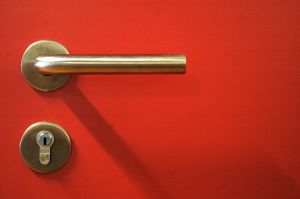 Every 90 days your pc prompts you to change your password. Which in turn makes you sigh with despair, conveniently ignore the message and postpone it until the absolute last day. And why? Because choosing a password you won’t forget after two days takes some effort and brain power.
Every 90 days your pc prompts you to change your password. Which in turn makes you sigh with despair, conveniently ignore the message and postpone it until the absolute last day. And why? Because choosing a password you won’t forget after two days takes some effort and brain power.
Passwords are like taxes, municipal fees and ridiculous bank fees – frustrating, but necessary. (ok, maybe they’re not all necessary, but you get my point.)
Your best solution? Just change it immediately and you won’t be confronted by a looming “your password expires in x days” message every day. To make the process as fast and painless as necessary, we have a few suggestions.
When your pc prompts you to change your password, go directly to http://www.sun.ac.za/useradm. Before you change your password, log out of your Inetkey and Outlook to make the synchronisation easier. If possible, don’t change your password while connected via wireless. Rather use your network cable and deactivate the wireless.
If you only use your pc at home and it’s not connected to the network, the change of passwords will only apply to your email and Inetkey. The initial password on your pc will therefore not be changed unless it’s on the network. For passwords to synchronise correcly, a pc/laptop has to be connected to one of the US domains.
This week 6.5 million LinkedIn accounts were hacked into and this one again emphasises the necessity for strong passwords.
In particular take note of the following:
- you can’t use your previous 10 passwords again.
- your new password can not consist of your username, name or any variation of your current password.
- your passwords have to consist of 8 or more characters.
- passwords have to consist of at least 3 characters of the following groups: small caps, capital letters, numbers and special characters. (for example %,$,#)
If you changed your password and it hasn’t updated fast enough on your cellphone or tablet, reset the password to the latest one and contact IT to unlock your account. This will prevent you from having to change your password again.
Tags: password


Heeltemal korrek, Steve. Sterk wagwoorde het niks met die LinkedIn-geval te doen nie.
Dit beteken egter nie dat sterk wagwoorde nie belangrik is nie, want dit bied ‘n mate van beskerming teen die (rekenaarmatige) raai van wagwoorde.
LinkedIn se groot sonde is blykbaar dat hulle nie die gestoorde, ge-enkripteerde wagwoorde ge-“salt” het nie, m.a.w. nie lukrake karakters tot die gestoorde wagwoorde toegevoeg het nie.
In verband met:
“Hierdie week is daar in 6.5 MILJOEN LINKEDIN REKENINGE INGEBREEK en dit beklemtoon weereens die noodsaaklikheid van `n sterk wagwoord.”
Hierdie is regtig misleidend. Eerste, rapporteer LinkedIn “zero accounts have been compromised as a result of the password leaks” – daar is net gehutsde wagwoorde gelek, nie die wagwoorde self nie.
Maar meer belangrik – geen LinkedIn gebruiker sou geensins veiliger gewees het teen hierdie risiko deur “sterker” wagwoorde te gebruik nie.
Daar is ‘n beter manier om van die hoofpyn van wagwoorde ontslae te raak!
Installeer KeePass en Dropbox, hou jou wagwoordlêer in Dropbox en KeePass op elke rekenaar, tablet en slimfoon wat jy gebruik. Jou wagwoorde is altyd by jou, waar jy hulle ook al nodig het – al is dit een wat jy ‘n jaar laas gebruik het.
Met KeePass hoef jy nie jou kop te breek oor wagwoorde uitdink nie – hy sal dit vir jou doen.
Die KeePass wagwoordlêer is baie sterk ge-enkripteer.
Daar is wel een wagwoord wat jy nie moet vergeet nie – en dis jou KeePass wagwoord.